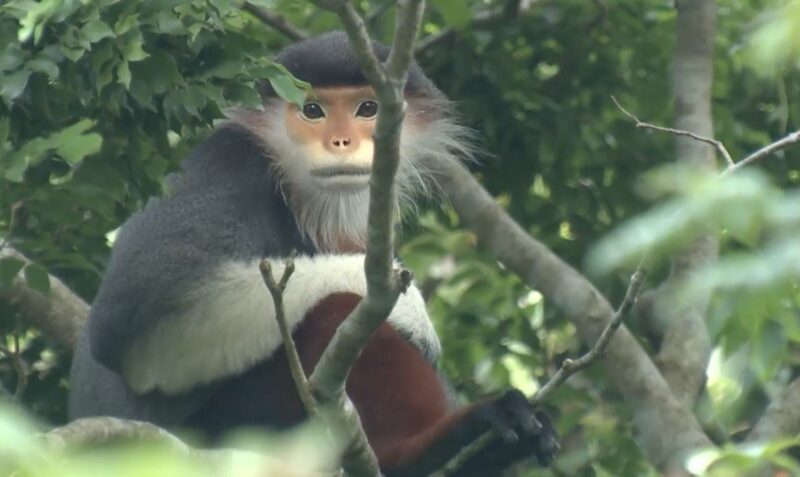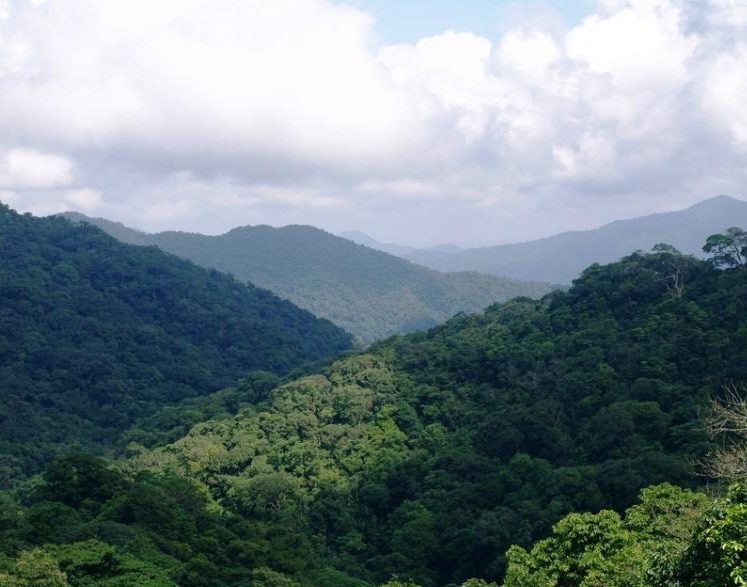Red-shanked Douc
Species Data
Class: Mammalia
Order: Primates
Family: Cercopithecidae
Scientific Name: Pygathrix nemaeus
IUCN Red List status: Critically Endangered
Description
The Red-shanked Douc or Red-shanked Douc Langur is a brightly coloured old-world monkey, with distinctive reddish brown legs, and a vibrant yellow-orange face. They have long white tails with a distinguishing white triangle of fur around the base.
The rest of their coat is a mixture of mottled silvery grey and black, with protruding white whiskers and white forearms.
They measure around 60 centimetres in length, with tails reaching 75 centimetres. Red-shanked Doucs weigh in the region of 8-12 kilograms.
In Vietnamese the Red-shanked Douc is called “Vooc Ngu Sac” meaning “Five-coloured Macaque” due to its colourful “outfit”.
Behaviour
Red-shanked Doucs are diurnal and arboreal, spending their days among the treetops in mixed sex social groups of varying sizes. They are very rarely seen on the ground. The doucs sleep in large, carefully selected trees with thick canopies, which are entered at dusk and are not exited until dawn.
Their diet consists primarily of small, tender leaves but they also eat flowers, fruits, buds and seeds.
The breeding season takes place from February to June, with a single infant born after a gestation period of around 210 days.


Habitat
The douc’s range spans across Vietnam and Laos and into northern Cambodia, found in evergreen and semi-evergreen broadleaf forests up to 1,600 metres elevation. They are often found in areas of forest on limestone formations.
Threats and Conservation
Habitat loss is a significant threat facing the Red-shanked Douc, with large tracts of forest habitat lost due to extensive logging for agriculture and infrastructure development, as well as significant portions of forest degraded during wartime.
Hunting is also a major threat, with Doucs being targeted for subsistence, traditional medicine and the illegal pet trade. Unfortunately douc langurs are particularly susceptible to hunting, as they instinctively stay motionless in the canopy rather than fleeing to safety.
Vietnam and Laos have legislation regarding the hunting of doucs, but this is poorly enforced.
